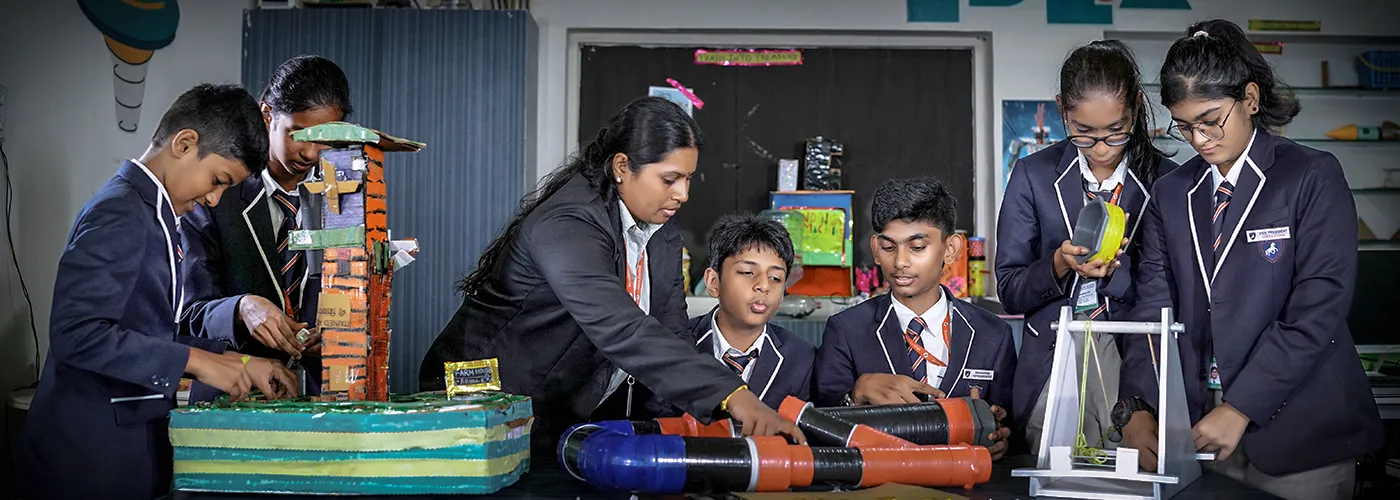Creative Art

Manchester International School takes pride in creating a nurturing environment that fosters creativity and artistry, inspiring students to pursue their artistic passions. As the best school for music and performing arts in Coimbatore, our Art and Design Department attracts students with a natural inclination towards art. The Visual Arts Program begins from Kindergarten, providing a platform for students to express their ideas while connecting with the world. Through this program, students experiment with various mediums such as digital art, clay modeling, and origami. Their artwork is displayed in classrooms throughout the year, culminating in an Action Day event, where students exhibit their artistic creations.
The Visual Arts Program: Enhancing Creativity
The Visual Arts Program offers a balanced approach to learning, engaging students in art-making activities, art history, critique, and reflection. As a CBSE school with professional music training, we encourage students to plan, design, and execute their artistic vision while tracking progress in their personal art books.
Our CBSE school with cultural and artistic programs allows students to explore fine art styles, techniques, and crafts from different cultures. Arts field trips and interdisciplinary projects aligned with PYP units enrich the curriculum. The Arts Collaboration for each grade integrates visual art, music, dance, and drama, making us a leading school for visual arts and design education.
The Benefits of Creative Arts Education
Creativity: The arts allow students to express themselves, whether through painting, sculpting, music, or drama. As a school with integrated music and arts curriculum, we encourage creative thinking and self-expression.
Academic Performance: Students engaged in visual arts and music perform better academically, often excelling in math, science, and language skills.


Motor Skills: Activities such as drawing, painting, and sculpting enhance fine motor development, an essential skill for young learners.
Confidence: Through stage performances, music concerts, and theater, students gain the confidence to step out of their comfort zones.
Visual Learning: Our state-of-the-art creative art studios help students develop visual-spatial skills, learning to interpret and analyze visual information effectively.
Decision Making and Problem Solving: The arts nurture critical thinking, teaching students to make creative decisions—a skill beneficial in all areas of life.
Resilience and Willpower: Pursuing the arts requires dedication and perseverance, preparing students for challenges in their careers and beyond.
Focus and Discipline: Whether through music lessons, drama rehearsals, or dance practice, students learn the importance of concentration and persistence.
Collaboration and Teamwork: Many artistic programs involve group participation, such as choirs, bands, and theater productions, teaching students how to work together towards a shared vision.
Accountability and Leadership: Students take responsibility for their roles in performances and artistic projects, learning the value of teamwork, discipline, and leadership.
At Manchester International School, we are committed to nurturing future artists, performers, and creative thinkers. As a top school with advanced theater and stage performances, we ensure that every student explores their artistic potential through international-standard music and arts training.
Join us to discover a world where creativity knows no bounds!












